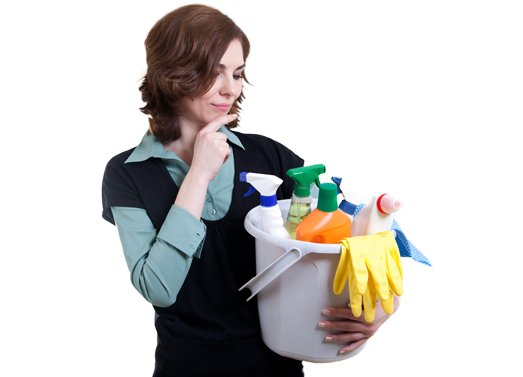Air Quality: The Key to Vibrant Living and Working Spaces
Posted on 07/09/2025
Air Quality: The Key to Vibrant Living and Working Spaces
In today's fast-paced world, where we spend the majority of our time indoors, the significance of air quality cannot be overstated. Whether at home, in the office, or in public areas, healthy air quality is at the very heart of feeling energetic, focusing better, and enjoying a balanced lifestyle. This comprehensive guide will explore why air quality is so important, the factors affecting it, and actionable steps for creating vibrant living and working environments that support well-being, productivity, and happiness.
Understanding the Importance of Air Quality
Many people consider furnishings, coloring, and layout as priorities for creating pleasant interiors. However, the invisible factor of indoor air quality is just as pivotal--if not more so. Poor indoor air is often regarded as the "silent threat" because its negative effects accumulate gradually but can profoundly impact your health and performance.
- Good air quality leads to increased energy levels, reduced sick days, and an improved sense of wellbeing.
- Poor air quality is linked to allergies, headaches, respiratory issues and even decreased cognitive function.
- High indoor pollution can be up to five times worse than outdoors, as per the Environmental Protection Agency (EPA).
High indoor air quality is therefore fundamental to designing vibrant spaces, making it an essential aspect for both residential and commercial buildings.

Factors Affecting Indoor Air Quality
To effectively address indoor air issues, it's crucial to identify and understand the various elements that contribute to air pollution. Key influencers of indoor air quality include:
1. Ventilation
- Insufficient ventilation can trap pollutants indoors.
- Proper airflow helps dilute and remove contaminants.
- Modern, energy-efficient buildings often have less airflow, necessitating mechanical ventilation.
2. Sources of Indoor Pollutants
- Household cleaning agents and toiletries often emit volatile organic compounds (VOCs).
- Building materials, carpets, paints, and plastics may release chemical fumes.
- Cooking, smoking, and burning candles are additional sources of indoor air pollution.
3. Biological Contaminants
- Mould, bacteria, and dust mites thrive in damp environments.
- Pet dander and pollen contribute significantly to air quality issues, especially for those with allergies.
- Poor humidity control can encourage growth of indoor allergens.
4. Outdoor Pollution
- Fuel emissions, industrial pollution and pollen can infiltrate indoor environments through doors and windows.
- Areas with high ambient pollution levels are at greater risk for indoor air issues.
How Does Air Quality Impact Health and Productivity?
The impact of air quality--both positive and negative--extends far beyond mere comfort. It significantly influences our health and productivity. Let's break down these effects:
Short-Term Health Effects
- Irritation of eyes, nose and throat
- Fatigue and headaches
- Increased allergy and asthma attacks
- Reduced concentration and focus
Long-Term Health Consequences
- Respiratory diseases, such as chronic bronchitis and asthma
- Cardiovascular issues
- Heightened risk for certain cancers
- Weakened immune function
Productivity and Well-being
- Clean, fresh air enables better cognitive performance, alertness, and decision-making.
- Workers in high air quality spaces report higher job satisfaction and fewer sick leaves.
- Children in schools with proper ventilation and filtration show improved learning outcomes.
Investing in healthy air quality is an investment in the people who inhabit your home or workspace.
Main Indoor Pollutants to Watch Out For
Being informed is half the battle. Here are the chief culprits impacting indoor air quality:
- Particulate matter (PM): Tiny airborne particles from dust, combustion, and smoke that can penetrate deep into the lungs.
- Volatile Organic Compounds (VOCs): Emitted as gases from many solids and liquids, including paints, cleaners, and furniture.
- Carbon monoxide (CO): Odorless, colorless gas from burning fuels; can be lethal at high concentrations.
- Formaldehyde: Common in pressed-wood products, adhesives, and some fabrics--recognized as a human carcinogen.
- Mould spores and mildew: Especially in damp environments, these can trigger allergic reactions and respiratory issues.
- Radon: A naturally occurring radioactive gas that can seep in through foundation cracks--leading to lung cancer if left unchecked.
- Dust, pollen, and pet dander: Frequent triggers for allergies year-round.
Methods to Achieve and Maintain Excellent Air Quality in Homes
Creating and maintaining clean indoor air in your living spaces often requires a multi-pronged approach. Here's an overview of actionable steps:
1. Improve Ventilation
- Open windows regularly (if outdoor air is clean) to refresh indoor air.
- Use exhaust fans in kitchens and bathrooms to expel moisture and pollutants.
- Consider mechanical ventilation systems for modern, airtight homes.
2. Control Sources of Pollution
- Choose low-VOC paints, sealants, and cleaning products.
- Store chemicals and fuels outside living areas.
- Avoid burning candles or incense excessively indoors.
- Have furnaces, stoves, and fireplaces inspected regularly for leaks.
3. Regular Cleaning and Maintenance
- Vacuum floors and furniture frequently with HEPA-filter vacuums.
- Wash bedding and curtains regularly to reduce dust accumulation.
- Keep humidity between 30% and 50% to prevent mould growth.
- Maintain air filters in HVAC systems and replace as recommended.
4. Incorporate Air Purifiers
- Use air purifiers with HEPA filters to remove fine particles and allergens.
- Consider purifiers with activated carbon filters for VOC and odor removal.
- Choose appropriately sized units for your living spaces.
5. Add Plants That Improve Air Quality
- Plants such as spider plants, peace lilies, and snake plants help absorb some toxins and freshen air naturally.
- Always check plant safety for homes with children or pets.
6. Monitor Indoor Air Quality
- Install air quality monitors to detect VOCs, CO2, particulate matter, and humidity.
- Take remedial action quickly if levels rise above safe thresholds.
Optimizing Air Quality in Corporate and Commercial Spaces
While individuals have control over their homes, larger organizations must take a strategic and systematic approach to ensuring workplace air quality. Here are best practices for offices, schools, and commercial environments:
Upgrading HVAC Systems
- Invest in high-efficiency particulate air (HEPA) filtration and UV-C light systems to combat bacteria and viruses.
- Schedule routine HVAC inspections to optimize performance.
Monitor CO2 and Ventilation Levels
- High indoor CO2 can hamper productivity and concentration.
- Smart building management systems can monitor and adjust ventilation in real time.
Encourage Employee Participation
- Educate staff on the importance of keeping vents unblocked and reporting leaks, spills, or water damage promptly.
- Provide green zones or living plant walls to introduce more oxygen and filter air.
Complying with Occupational Standards
- Follow OSHA and local regulations for air quality, chemical storage, and ventilation rates.
- Regularly test for mold, VOCs, and other common pollutants, especially following renovations.
Emerging Technologies for Superior Air Quality
As awareness of health and building wellness grows, so does the innovation in air purification and monitoring. Here are a few cutting-edge solutions:
- Smart Air Monitors: IoT-enabled sensors provide continuous, real-time air quality data and can automate adjustments in ventilation.
- UV-C and Bipolar Ionization: HVAC-integrated systems that kill or deactivate viruses, bacteria, and mold spores.
- Advanced Filtration Materials: Nanofiber and electrostatic filters capture even finer particulates, maximizing air cleanliness.
- Automated Air Purification: Robotic and building-integrated purifiers can move autonomously and target specific problem areas.
Staying updated on these technologies can be a game-changer for those aiming to maintain optimal air quality in the workplace or at home.
Air Quality for Specialized Spaces
Not all spaces are created equal when it comes to air requirements. Here's how air quality concerns differ in specialized environments:
Schools and Childcare Centers
- Children are especially sensitive to pollutants; extra filtration, cleaning, and ventilation are critical.
- Limit use of harsh chemicals and maximize natural ventilation.
Restaurants and Kitchens
- Cooking releases PM, VOCs, and carbon monoxide; commercial-grade hoods and exhaust fans are vital.
- Regular deep cleaning prevents buildup and maintains air freshness.
Factories and Warehouses
- Monitor for chemical fumes, dust, and particulate emissions related to industrial processes.
- Proper zoning and air barriers can separate clean zones from polluted work areas.

Practical Tips for Everyday Air Quality Enhancement
You don't need to overhaul your entire space immediately. Try these everyday tactics to boost air quality now:
- No-shoes policy: Prevents tracking in outdoor pollutants.
- Keep pets groomed: Reduces dander and shedding.
- Don't smoke indoors: Eliminate one of the most hazardous sources of indoor air pollution.
- Vent during and after cleaning: Allow fumes and chemicals to dissipate quickly.
- Regularly check for leaks: Address water issues swiftly to prevent mould growth.
The Takeaway: Air Quality Is Non-Negotiable for Vibrant Spaces
While modern construction and technology have made our spaces more comfortable and efficient, they have also created environments prone to trapped indoor contaminants. Prioritizing air quality in both living and working spaces isn't just about avoiding illness--it's about fostering vitality, creativity, and lasting well-being.
Air quality management is a journey--not a one-time fix. Start with assessments, adopt changes step by step, and leverage the latest in air monitoring and filtration. By committing to cleaner air, you set the foundation for vibrant, productive, and healthy environments today and for years to come.
Remember: The air you breathe is the key to vibrant living and working spaces--investing in its quality is investing in a brighter, healthier future.




